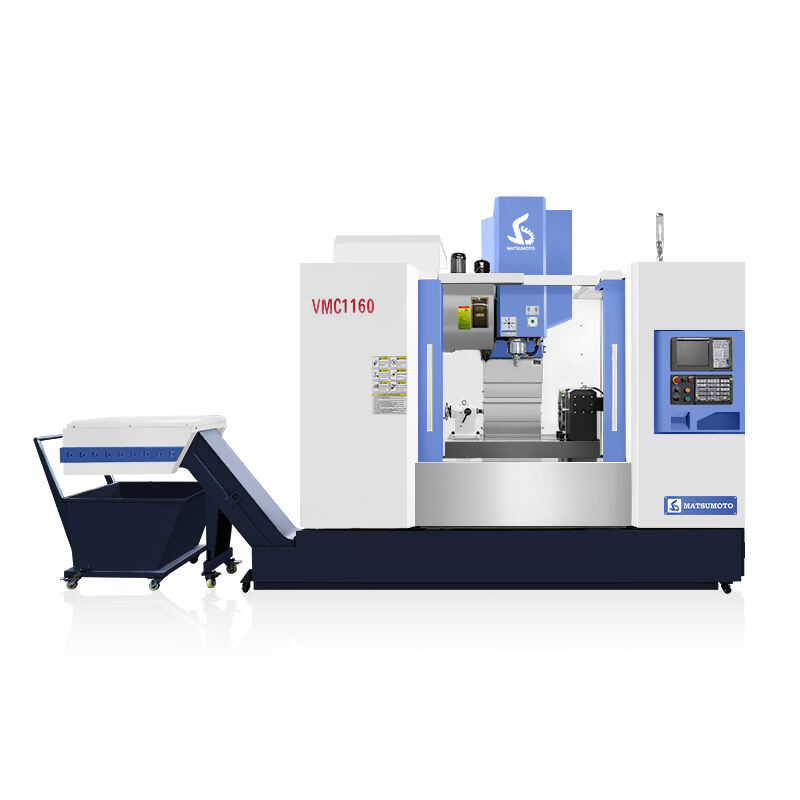Machining centers have evolved from CNC milling machines. The biggest difference from CNC milling machines is that the machining center has the ability to automatically exchange machining tools. By installing different purpose tools on the tool magazine, the machining tools on the spindle can be changed through an automatic tool changing device in one clamping, achieving multiple machining functions.

Machining centers have evolved from CNC milling machines. The biggest difference from CNC milling machines is that the machining center has the ability to automatically exchange machining tools. By installing different purpose tools on the tool magazine, the machining tools on the spindle can be changed through an automatic tool changing device in one clamping, achieving multiple machining functions.
A CNC MACHINING CENTER is an efficient automated machine tool composed of mechanical equipment and CNC systems, suitable for processing complex parts. CNC machining center is one of the most widely used and high-yielding CNC machine tools in the world. It has strong comprehensive processing capability, and can complete a large amount of processing content after one clamping of the workpiece, with high processing accuracy. For batch workpieces with moderate processing difficulty, its efficiency is 5-10 times that of ordinary equipment, especially it can complete many processing tasks that ordinary equipment cannot. It is more suitable for single piece processing or small batch multi variety production with complex shapes and high precision requirements. It integrates functions such as milling, boring, drilling, threading, and cutting threads into one device, enabling it to have multiple processing techniques. Machining centers are classified into horizontal and vertical machining centers based on the spatial position of the spindle during machining. Classified by process use, there are boring and milling machining centers and composite machining centers. Classified by special functions, there are single worktable, dual worktable, and multi worktable machining centers. Single axis, dual axis, three-axis, and replaceable spindle box machining centers. According to the classification of guide rails, there are: wire rail machining centers, hard rail machining centers, etc.
Machining centers are often divided into vertical machining centers and horizontal machining centers based on the position of the spindle in space. A machining center with a spindle in a vertical position in space is called a vertical machining center, while a machining center with a spindle in a horizontal position in space is called a horizontal machining center. The spindle that can be converted vertically and horizontally is called a vertical horizontal machining center or a five sided machining center, also known as a composite machining center. Divided by the number of columns in the machining center; There are single column and double column (gantry style).
According to the number of motion coordinates of the machining center and the number of coordinates controlled simultaneously, there are three axis two linkage, three axis three linkage, four axis three linkage, five axis four linkage, six axis five linkage, etc. Three axis and four axis refer to the number of motion coordinates that the machining center has, while linkage refers to the control system being able to simultaneously control the number of motion coordinates, thereby achieving position and speed control of the tool relative to the workpiece.
According to the number and function of workbenches, there are single worktable machining centers, dual worktable machining centers, and multi worktable machining centers.
According to machining accuracy, there are ordinary machining centers and high-precision machining centers. A regular machining center with a resolution of 1 μ m, a maximum feed rate of 15-25m/min, and a positioning accuracy of about 10 μ m. High precision machining center with a resolution of 0.1 μ m, maximum feed rate of 15-100m/min, and positioning accuracy of about 2 μ m. Between 2 and 10 μ m, with more ± 5 μ m, it can be called precision level.
 Hot News
Hot News2025-01-04
2024-12-20
2024-08-19
2024-10-28
2024-09-11
2025-01-30